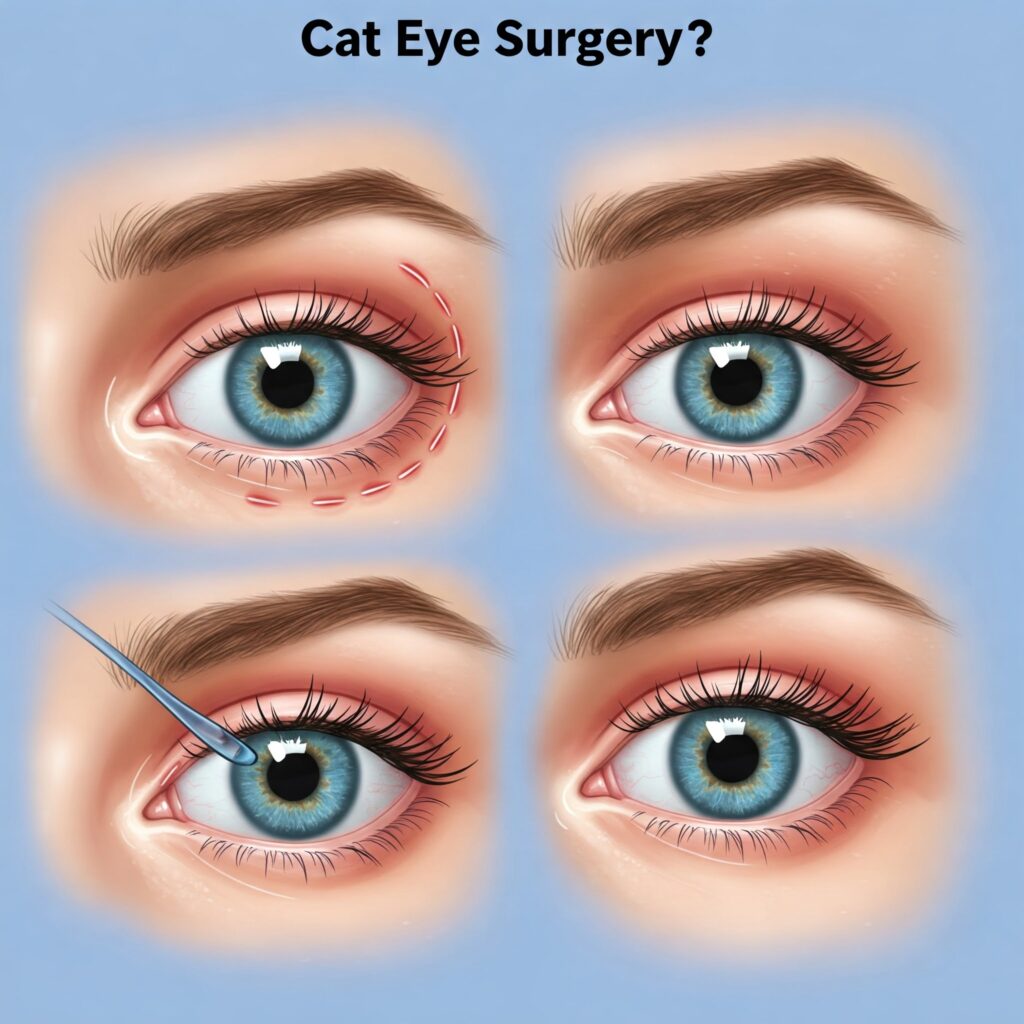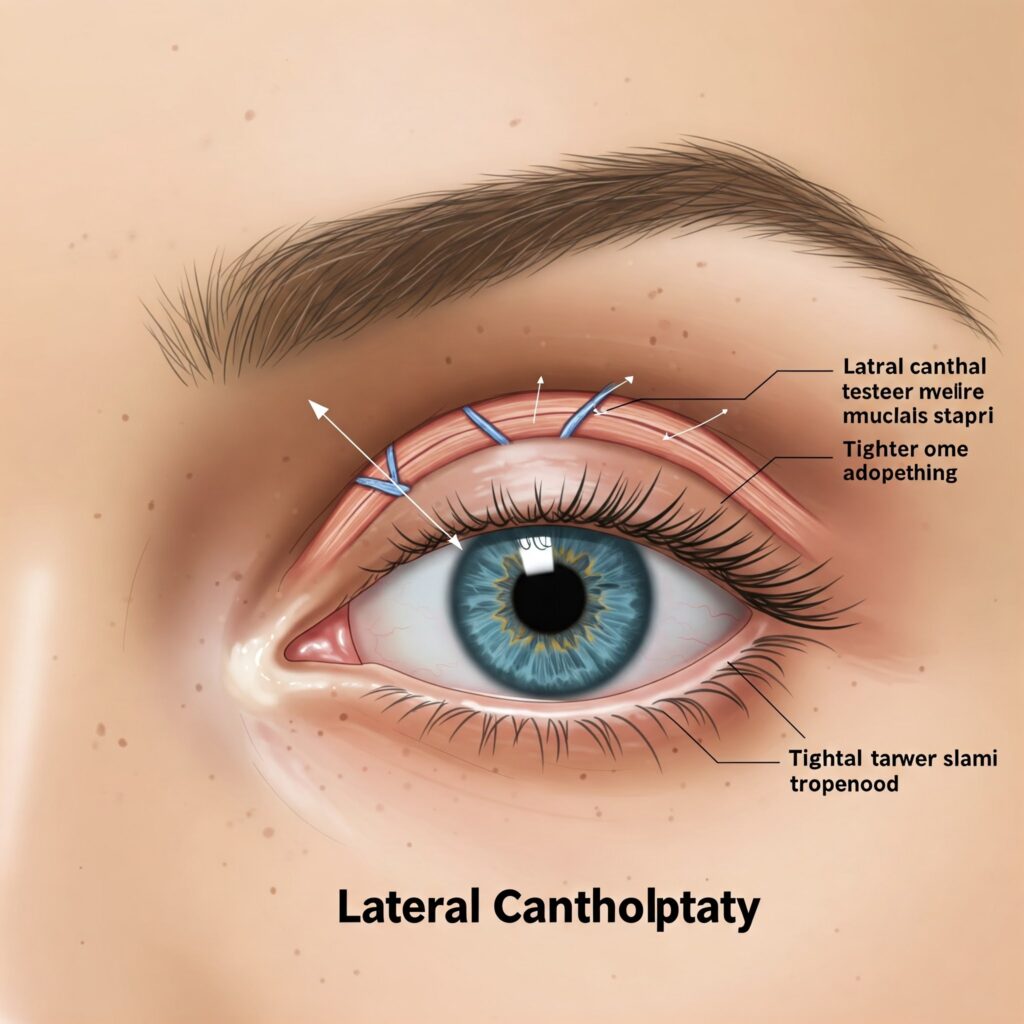If you’re considering cat eye surgery (also known as canthoplasty), it’s essential to understand the procedure, risks, recovery, and expected results. This guide covers everything you need to know before making a decision.

1. What Is Cat Eye Surgery?
Cat eye surgery is a cosmetic procedure designed to create an almond-shaped, lifted eye appearance—similar to a cat’s eyes. The surgery involves adjusting the lateral canthus (the outer corner of the eye) to give a more elongated, dramatic look.
How It Works:
- A small incision is made at the outer corner of the eye.
- The surgeon tightens or repositions the tendons and muscles.
- Stitches are placed to create a subtle upward tilt.
This procedure is popular among those seeking a sultry, feline-like gaze or correcting drooping eyelids.
2. Who Is a Good Candidate for Cat Eye Surgery?
Not everyone is an ideal candidate for cat eye surgery. Here’s who may benefit:
✅ People with naturally downturned eyes wanting a lifted appearance.
✅ Those with mild eyelid sagging due to aging.
✅ Individuals seeking a more exotic, almond-shaped eye look.
Who Should Avoid It?
❌ People with severe dry eye syndrome.
❌ Those with certain eye conditions (like glaucoma).
❌ Individuals with unrealistic expectations.
A consultation with a board-certified surgeon is crucial before proceeding.
3. Different Types of Cat Eye Surgery Techniques
There are a few approaches to achieving the cat eye effect:
A. Lateral Canthoplasty
- The most common method.
- Tightens the outer eye corner for a lifted look.

B. Fox Eye Thread Lift
- A non-surgical alternative using dissolvable threads.
- Temporary results (lasts 6–12 months).
C. Blepharoplasty with Canthoplasty
- Combines eyelid surgery with a cat eye lift.
- Ideal for those with excess eyelid skin.
Your surgeon will recommend the best technique based on your anatomy and goals.
4. What to Expect During the Procedure
Understanding the process can ease anxiety. Here’s a step-by-step breakdown:
Before Surgery:
✔ Consultation with before-and-after photos.
✔ Medical evaluation to ensure safety.
During Surgery:
✔ Local or general anesthesia is administered.
✔ Small incisions are made at the outer eye corners.
✔ The surgeon adjusts the canthal tendon for the desired lift.
✔ Sutures are placed (some dissolve, others are removed later).

After Surgery:
✔ Mild swelling and bruising for 1–2 weeks.
✔ Stitches removed in 5–7 days (if non-dissolvable).
5. Recovery & Aftercare Tips
Proper aftercare ensures optimal results. Follow these guidelines:
First 48 Hours:
- Apply cold compresses to reduce swelling.
- Keep your head elevated while sleeping.
- Avoid straining your eyes (limit screen time).
First Two Weeks:
- No heavy exercise or bending over.
- Use prescribed antibiotic ointments.
- Avoid rubbing your eyes.
Long-Term Care:
- Wear sunglasses to protect from sun exposure.
- Stay hydrated for better healing.
Most patients see final results within 3–6 months.
6. Potential Risks & Complications
Like any surgery, cat eye surgery has risks:
⚠ Asymmetry (uneven lift).
⚠ Scarring (minimal if done correctly).
⚠ Dry eyes or irritation (usually temporary).
⚠ Infection (rare with proper care).
Choosing an experienced surgeon minimizes these risks.

7. How Long Do Results Last?
- Permanent: Traditional canthoplasty results are long-lasting.
- Temporary: Thread lifts last 6–18 months.
Aging and skin elasticity will naturally affect longevity, but results typically endure for years.
8. How Much Does Cat Eye Surgery Cost?
Prices vary based on location and surgeon expertise:
📍 U.S. Average: 3,000–3,000–6,000
📍 UK/Europe: £2,000–£4,500
📍 South Korea (popular for eye surgeries): 2,500–2,500–5,000
Insurance usually doesn’t cover cosmetic procedures unless medically necessary.
Final Thoughts: Is Cat Eye Surgery Worth It?
If you desire a more alluring, lifted eye shape, cat eye surgery can be a game-changer. However, thorough research and choosing a skilled surgeon are key to success.
Next Steps:
✔ Consult with a board-certified plastic surgeon.
✔ Review before-and-after photos.
✔ Discuss realistic expectations.
Is cat eye surgery painful?
Most patients report mild discomfort rather than severe pain. Surgeons use local or general anesthesia during the procedure, and any post-op soreness can be managed with prescribed pain relievers.
How long does the surgery take?
The procedure typically takes 1–2 hours, depending on whether it’s combined with other treatments (like blepharoplasty).
When will I see the final results?
Initial swelling subsides in 2–4 weeks, but the full results settle in 3–6 months as the tissues heal completely.
Can I wear makeup after surgery?
Avoid eye makeup for at least 7–10 days to prevent infection. Your surgeon will advise when it’s safe to resume.
